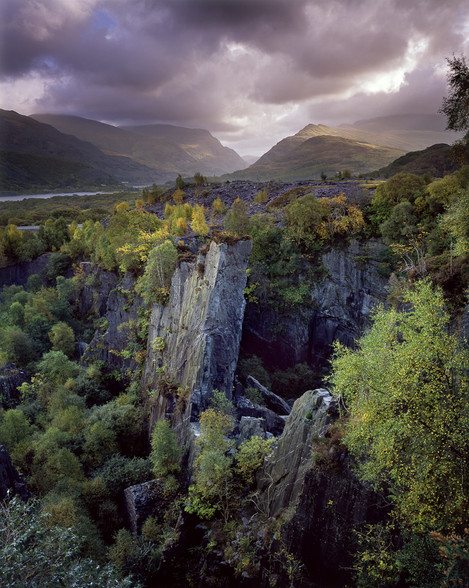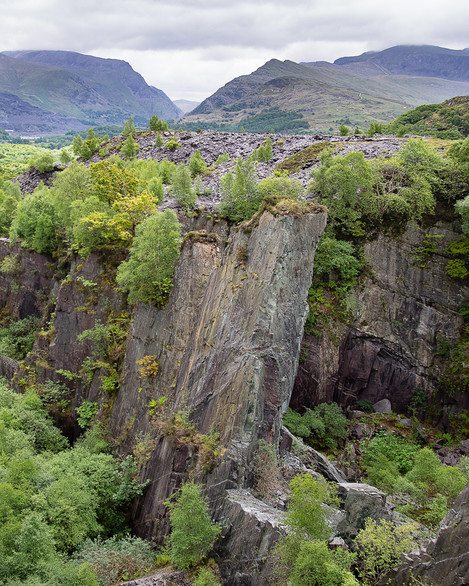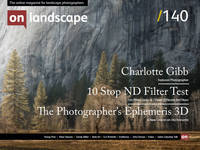John Osman chooses one of his favourite images

John Osman
I am an amateur photographer who is lucky enough to have retired from work, meaning I have so much more time now to develop my skills and style. Instagram
With so many excellent photographers making their work known to others through galleries, websites, social media, exhibitions, shows, books and magazines (including On Landscape) there is no shortage of images I might have chosen when asked to write here about a favourite photograph. So why did I find it so easy to respond almost immediately to this request with my choice of “Llanberis over Glyn Rhonwy” by Richard Childs? I can’t now recall how or when I first became aware of this work but there are several reasons why it caught my eye then and has since become a firm favourite.
One reason is that I have known and enjoyed this part of North Wales for over thirty years. I have visited Llanberis many times but until I saw Richard’s image I had always been drawn in other directions when looking for images of my own. Unless setting off for Snowden, most photographers – I think – head east from there, as I had, to capture the local viewpoints and scenes of industrial heritage around Llyn Padarn and Dinorwic Quarry (both of which are visible, but only just so, in this picture). They provide endless possibilities for distant and close landscapes most of which will be familiar to other photographers, but here was a viewpoint that I had been unaware of previously even though it is as dramatic as any in the locality and bears witness just as strongly to Snowdonia’s industrial past as do those of Dinorwic. I was excited by Richard’s portrayal of a fresh and compelling photographic viewpoint in an area easily accessible from my home on the Wirral.

This area of North Wales has long been associated with the romantic sublime aesthetic and the context in which this photograph’s main feature is set– the rugged mountains and dramatic sky – certainly evoke a sense of awe inspiring nature. (Tate: Art and the Sublime) But the main feature here is man-made rather than natural. Does that place it in another category?
I had an opportunity to try in spring of last year during a trip to the area with colleagues from my local photographic society. I worked out roughly where the viewpoint is by looking at the image and studying the OS map, other maps and satellite imagery. Finding Glyn Rhonwy Quarry is relatively easy and it is possible to photograph it towards the west from the roadside. But the area is heavily fenced off there and the choice of viewpoint is very limited. I found that gaining access to Richard’s viewpoint was much more challenging: and it was more by luck than design that I eventually reached it from the opposite direction. The circuitous route that I took did have the advantage, however, of taking me past a couple of other large quarries worthy of further photographic exploration, as well as new (to me at least) views of Snowden to the south
Needless to say, perhaps, none of the images I took matched up to Richard’s, though by my own standards I believe I made one successful photograph. I chose a slightly different viewpoint which meant that I missed the tree in the bottom right and had a different perspective on the pinnacle below it. And I included less sky, perhaps because the day was overcast and the flat light made it was less interesting (I was there late morning). The light on this occasion also meant the absence of those catches of sunlight on the trees in the middle distance and distant mountains that so enhance Richard’s image.
I have subsequently learnt more about Richard’s approach to his photography through On Landscape. I was delighted to see “Llanberis over Glyn Rhonwy.” featured in the Lightning Talk that Richard gave to the On Landscape Meeting of Minds Conference in 2016. On Landscape Conference 2016 Day Two. (It is about 4 hours and 55 minutes into this video – but the whole recording, together with the video of Day One, could make for a very informative and enjoyable “box set day”) He emphasised the importance of the foreground in his work (he called the talk “Foreground First”) and described how he had noticed the flow of key elements in his images into the frame from the bottom right. Both these features are evident here (though the foreground is rather less prominent than in other images by Richard). Certainly one reason for the lesser impact of my own images is the less distinct flow from the bottom right into the picture, and I think this plays as much of a part in why they are less successful as do the weaker skyline and absence of better light.
Richard followed up this Lightning Talk with an On Landscape article Foreground First: A Style Evolving. In the article, he explains in more detail his “rule of fifths” using this image as one example of it. The rule, or any other “rule,” is not something he consciously applies but it brings together a number of compositional elements in his pictures which contribute to a recognisable (and successful) “style”. The article is well worth a read.
Richard has said that this viewpoint is becoming something of a “honey pot” though it is not easy to access, and should be approached with great care to avoid a serious fall. Although I would like to return there and improve on my earlier efforts at recording this part of Snowdonia it might become increasingly difficult to do so as planning permission has now been granted for a hydro-electric pump storage scheme that makes use of Glyn Rhonwy (£100m Llanberis pump scheme approved). When I visited there was no barrier to access along the route I took, but this may no longer be so in future. If that is the case, and the Quarry is radically altered by construction work, then Richard’s image will be important not only for its quality, but also as a record of an interesting and beautiful interim stage in our evolving interaction with the natural environment of Snowdonia.
I am sure others appreciate the beauty of “Llanberis over Glyn Rhonwy” and the skill applied in making it. For me its making and publication have meant the additional benefits of seeing and recording this viewpoint for myself, and using the experience to learn something about how to improve my own photography. I will long remember and refer back to it.

